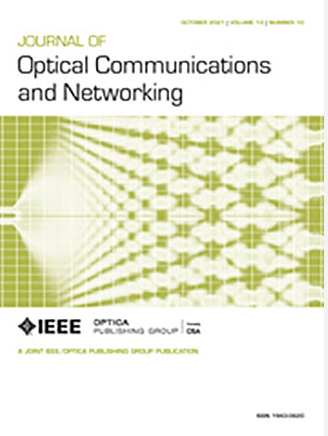土星:一种基于芯片的光网络架构,用于打破内存墙
IF 4.3
2区 计算机科学
Q1 COMPUTER SCIENCE, HARDWARE & ARCHITECTURE
引用次数: 0
摘要
随着高性能计算应用的计算密集型和数据密集型工作负载的增加,对更多核和更大存储容量的需求也在不断扩大。虽然计算能力正在迅速提高,但核心和内存模块之间的数据移动能力并没有实质性的进步。低能量效率和数据移动的并行性已经成为瓶颈。具有较好带宽和功率性能的光互连是一种很有前途的方法。此外,晶片技术显著地放大了光互连的好处。然而,现有的光网络没有考虑到芯片的模块化和灵活组装,也没有利用新的制造和封装。在本文中,我们提出了一种名为Saturn的光互连网络架构,它包括两个部分:核心到存储网络(CTMN)和核心到核心网络。在CTMN中,光宽带微环技术和共同设计的波长分配的集成使存储器访问能够在单跳中完成,提供高度并行的带宽。CTMN采用的蛇形布局消除了波导交叉,从而大大降低了插入损耗和能耗。分析仿真验证了Saturn的有效性和效率,表明与传统网络相比,它可以提高内存访问吞吐量性能,同时实现能耗降低。本文章由计算机程序翻译,如有差异,请以英文原文为准。
Saturn: a chiplet-based optical network architecture for breaking the memory wall
Given the increasingly computing-intensive and data-intensive workloads of high-performance computing applications, the need for more cores and larger storage capacity is expanding. While computational power is rapidly increasing, data movement capability among cores and memory modules has not stepped forward substantially. Low energy efficiency and parallelism of data movement have become a bottleneck. Optical interconnects with better bandwidth and power performance are a promising method. In addition, chiplet technology significantly amplifies the benefits of optical interconnects. However, existing optical networks do not take the modularity and flexible assembly of chiplets into account, nor do they take advantage of new fabrication and packaging. In this paper, we propose Saturn, an optical interconnection network architecture, including two parts: a core-to-memory network (CTMN) and a core-to-core network. In the CTMN, the integration of optical broadband micro-ring technology and co-designed wavelength assignment enables memory access to be completed in a single hop, providing highly parallel bandwidth. The serpentine layout employed in the CTMN eliminates waveguide crossings, which in turn substantially reduces the insertion loss and energy consumption. Analytical simulations have validated the effectiveness and efficiency of Saturn, showing that it can improve memory access throughput performance while achieving energy reduction compared with a traditional network.
求助全文
通过发布文献求助,成功后即可免费获取论文全文。
去求助
来源期刊
CiteScore
9.40
自引率
16.00%
发文量
104
审稿时长
4 months
期刊介绍:
The scope of the Journal includes advances in the state-of-the-art of optical networking science, technology, and engineering. Both theoretical contributions (including new techniques, concepts, analyses, and economic studies) and practical contributions (including optical networking experiments, prototypes, and new applications) are encouraged. Subareas of interest include the architecture and design of optical networks, optical network survivability and security, software-defined optical networking, elastic optical networks, data and control plane advances, network management related innovation, and optical access networks. Enabling technologies and their applications are suitable topics only if the results are shown to directly impact optical networking beyond simple point-to-point networks.

 求助内容:
求助内容: 应助结果提醒方式:
应助结果提醒方式:


